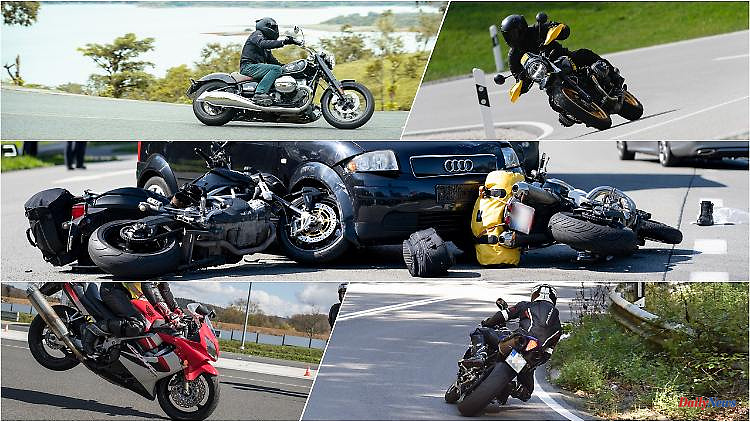For many, motorcycling is one of the most beautiful things in the world. Since it is not entirely without danger and different physical laws apply to a two-wheeler than to a car, there are a few things to keep in mind that can help prevent accidents.
If motorcyclists increase their awareness of dangers, it can help them to deal better with sticky moments. A safety awareness study conducted in 2020 by the Institute for Two-Wheeler Safety (IFZ) identified the five most critical situations for bikers. The traffic club ACE has summarized how these dangers should ideally be countered on a motorcycle.
Overlooked by other road users
According to the IfZ study, being overlooked is the most common reason for critical situations for over 50 percent of all motorcyclists. Bikers should therefore always be aware that they will not be noticed by other road users. Anyone who does not trust their own right of way, avoids blind spots and is always ready to brake will encounter classic moments of danger before they arise.
Of course, motorists are also called upon to be very attentive and show mutual consideration. Instead of relying solely on looking in the mirror, they should always check their shoulders before changing lanes, turning and overtaking to ensure that there is no other vehicle in the blind spot.
Braking in an inclined position
Many new motorcycles now have cornering ABS and are therefore well equipped to deal with the dangers that can arise from braking when cornering. If this technology is missing, bikers should always ensure a sensitive build-up of braking power when in an inclined position and react sensitively to changed driving behavior such as the motorcycle's tendency to stand up. In the event of hard braking interventions at a steep angle, tires may lose their cornering forces, which can easily lead to a fall.
The second problem with a hard brake application in an inclined position is the rapid righting of the motorcycle and the changing direction of travel. Instead of going around the bend, the bike may now drive into oncoming traffic. To counteract this, sensitive braking is also required if there is no cornering ABS.
Underestimate curves
The right line of sight is crucial for cornering. The biker's gaze should go as far as possible in the direction in which the bike is being driven. With this anticipatory driving style, you will intuitively choose the optimal radius. If the wrong radius was selected, the corrective steering impulse should be as soft, gentle and fluid as possible. Avoid jerky maneuvers to prevent the front wheel from buckling.
emergency braking
In order to be able to react as quickly as possible to a sudden dangerous situation, motorcyclists should always be ready to brake and therefore always have two fingers on the right brake lever. In the event of emergency braking, a quick reaction and a strong pull on the brake lever are crucial. If you ride a two-wheeler without an ABS system, you have to expect that one wheel will lock if you brake too hard, which can easily lead to a fall. In order to avoid this, a courageous braking intervention should only be applied close to the blocking limit, but not beyond it. Should the braking effect go beyond the locking limit, it is important to release the brake immediately and then apply it again firmly to avoid a locked front wheel.
evasive maneuvers
As with cornering, visual guidance is also crucial for evasive manoeuvres. In this situation, instead of looking at the obstacle, you should focus your eyes on the goal, for example an open lane. Possible alternative lanes should already be registered while driving in order to be able to react quickly and avoid emergency braking. In order to swerve spontaneously, a jerky steering impulse is required in the opposite direction to the desired direction of travel, which allows for a quick leaning and thus swerving.
Those who practice such maneuvers in a safe environment create better conditions for automating this anti-intuitive movement. Modern motorcycles with ABS, which allow safe evasive maneuvers even when braking hard, have a fundamental advantage.












